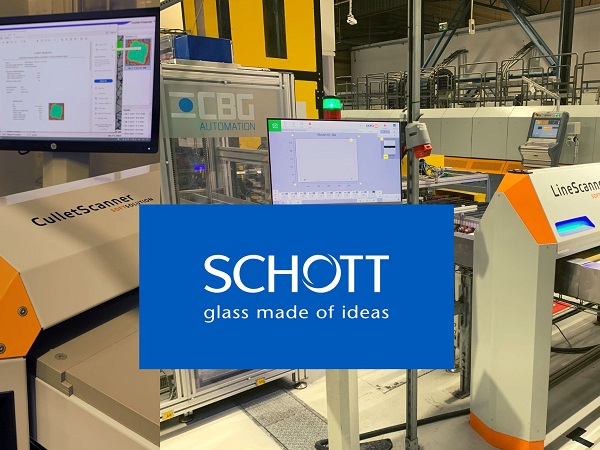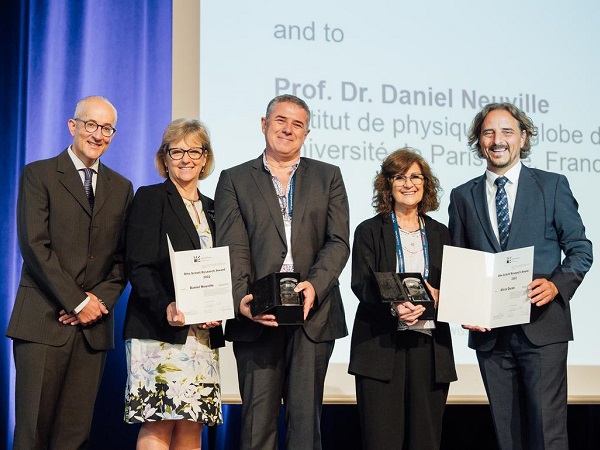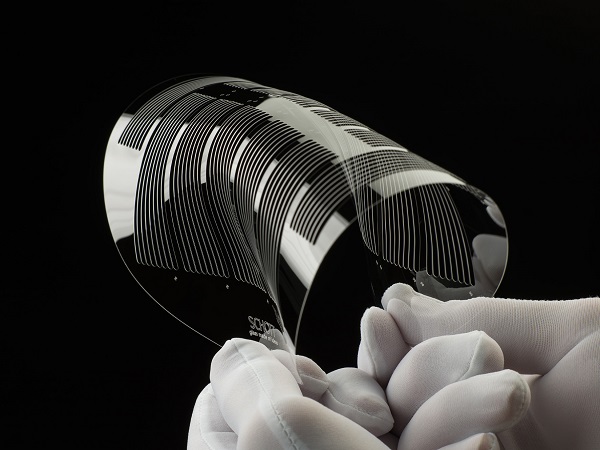Date: 27 March 2009
SCHOTT supplies its glass powder to the dental industry all over the world.
Landshut (Germany) March 24, 2009 — SCHOTT is the world’s leading manufacturer of special glass powders for dental fillings made of composite materials. At the IDS, the international technology group presented the world’s first “NanoFine” dental glass powder that consists of particles that are only 180 nanometers in size. For dentists and patients alike, finer filler materials mean longer lasting fillings and a more attractive appearance. Product developers also benefit from the extended material properties.
Bright white teeth are an attractive sign of one’s health. Nevertheless, caries rank among the world’s most frequent and widespread infectious diseases. Painful holes can result when bacteria cause the dental enamel to become porous. To save the tooth, the dentist has to remove the damaged areas and fill them with a replacement material.
In the past, mainly metallic alloys, such as gold or amalgam, were used as fillings. However, these have disadvantages: they conduct electricity, heat and cold to the sensitive nerve of the tooth. Many patients disapprove of using amalgam, a substance that contains mercury, for health reasons. Besides, these dark metallic fillings are often considered to be unattractive.
Fillings made from composites offer clear advantages
Dental composites, on the other hand, are optically similar to natural tooth material. Their recipe for success lies in their main components: a polymer resin that is initially liquid but hardens when exposed to UV light, and the less familiar but important filler material glass.
“Glass powder is a key component of modern dental composites,” explains Dr. Jörn Besinger, head of development at SCHOTT in Landshut, Germany. “Hardly anyone knows that a dental filling contains up to 80 percent glass powder. This gives the filling excellent mechanical properties. It can handle sustained pressure and is easy to polish,” he adds.
Fine pigment shades allow these fillings to match the respective tooth just perfectly. This is why they are often used for front teeth. But this filling material delivers convincing results with side teeth, as well. Dental composites stand up to the grinding movements of the masseter or chewing muscle, considered to be the strongest muscle in the body, for many years.
Nano fine glass particles for perfect dental fillings
In addition to the use of an extremely pure specialized glass, the size of the particles is critical to the quality of the composites. Here, experts say the smaller, the better. SCHOTT supplies its ultrapure dental glasses in 5 to 0.4 micrometer (µm) grain sizes. For this reason, leading dental composite manufacturers mainly use “SCHOTT UltraFine”, currently the finest quality level on the market, for their products.
Now, the technology group has succeeded in improving the grain size from “UltraFine” to “NanoFine” by further developing its patented multi-stage grinding process. The resulting particles are an average of 180 nanometers (nm) in size, with a tolerance of only 30 nm and a very narrow grain size distribution.
“The nano fine filler particles improve the appearance and ability to polish the composites and, therefore, also their resistance to wear,” Dr. Besinger explains. “In order to make it easier to process this nano fine powder, we offer NanoFine 180 with dispersing aids on an optional basis that prevent agglomerates from forming. The fine glass powder can also be combined with coarser particles to increase the packing density of the glass particles contained in the material. This reduces polymerization shrinkage, the contracting of the material that occurs during hardening of the polymer mixture,” he notes.
SCHOTT expands portfolio by adding other glass types
To ensure that the dentist can quickly determine whether a tooth shown on an x-ray image is healthy, carious or already contains a filling, dental glass powders from SCHOTT are x-ray opaque. Whereas healthy teeth look gray in x-ray images and cavities are darker, the composite fillings light up in white and can thus be clearly distinguished from untreated and carious teeth.
For IDS, SCHOTT will be adding other inert types of glass to its portfolio. In addition to glasses that contain barium and strontium, as well as special highly radio-opaque glasses for root canal fillings, glass powders that contain zirconium are now also being offered. These glasses are available with a refractive index of between 1.47 nd and 1.83 nd. This allows for a perfect match between the transparent filling material and the demands of various polymer recipes.
125 Years of a History of Innovation
Based in Landshut, Germany, SCHOTT Electronic Packaging (EP) is the leading manufacturer of special glass powders that feature specific physical, chemical and bioactive properties.
With several competence centers all over the world, SCHOTT EP offers the most modern dental glass powders in the highest degrees of purity and the finest grain sizes of 5 µm to 180 nm for esthetic restoration of teeth.
The company that belongs to the international technology group SCHOTT, which employees a staff of 17,300 all over the world, looks back on 125 years of experience in developing, manufacturing and reliably delivering unique glass technology to customers all over the world.







Add new comment